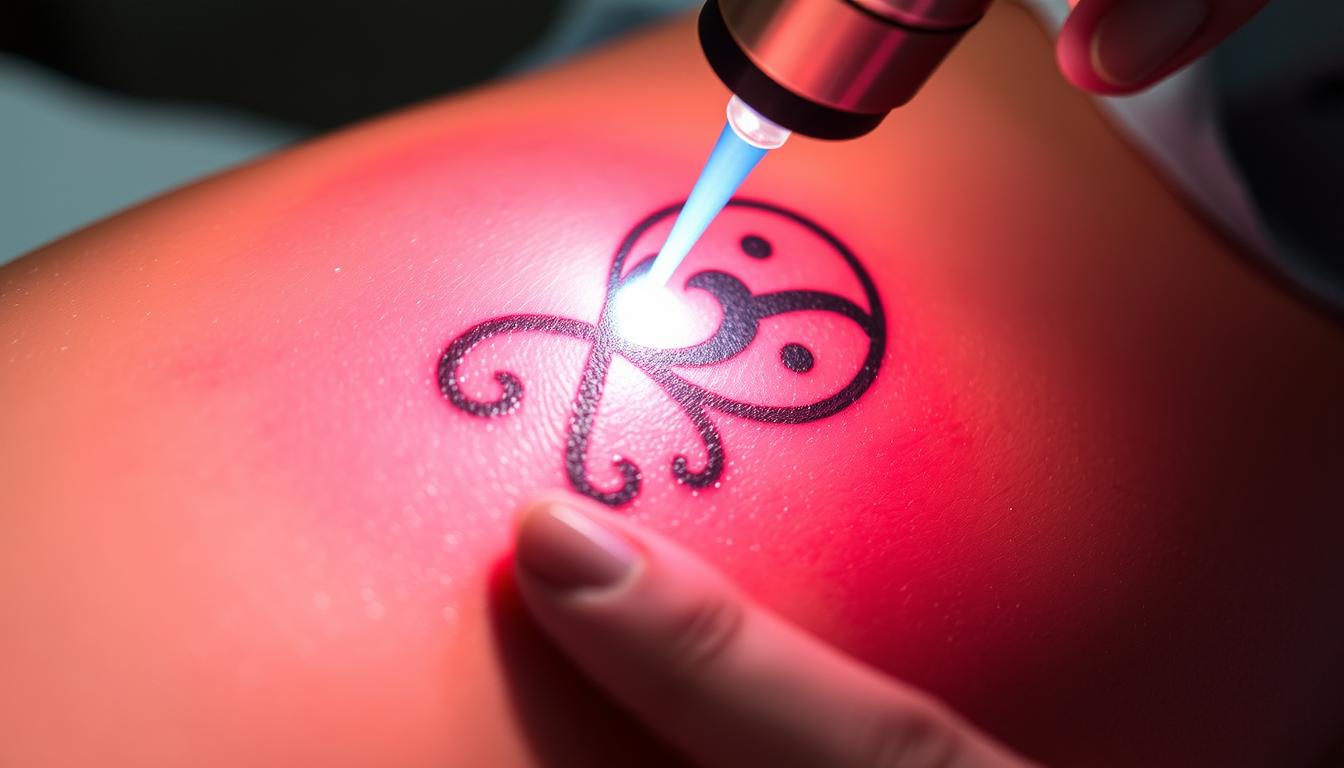
What if your favorite ink no longer reflects who you are today? You’re not alone. Studies reveal that 1 in 2 Americans with body art eventually seek ways to modify or erase their designs. Whether it’s a faded memory, a career shift, or simply changing tastes, modern solutions make revising your skin’s story more accessible than ever.
Gone are the days of harsh, ineffective methods. Today’s advanced techniques use medical-grade technology to target ink particles with precision, minimizing damage to surrounding skin. But how does it work? What factors determine success? And most importantly—how can you prepare for the journey ahead?
This guide breaks down everything from cutting-edge laser treatments to personalized care strategies. You’ll learn how specialists evaluate your unique situation, including design size, color complexity, and skin type. We’ll also explore practical tips for managing discomfort and maximizing results through each phase of the process.
Key Takeaways
- 50% of Americans with body art consider altering their designs
- Advanced laser methods prioritize safety and effectiveness
- Treatment plans adapt to ink colors, skin tone, and design size
- Multiple sessions typically required for optimal results
- Aftercare significantly impacts healing and final outcomes
Introduction to Tattoo Removal

Designs chosen years ago may no longer resonate with your current lifestyle. Whether it’s career advancement, relationship changes, or personal growth, altering skin art has become a common choice. Half of Americans with ink will seek modification services at some point, according to dermatology experts.
Understanding Your Motivation
Your reasons for considering this change matter. Career shifts often drive professionals to revise visible designs, while others simply outgrow youthful choices. Identifying your “why” helps specialists create tailored plans that align with your goals and timeline.
The Growing Demand in the United States
Over 20 million people explore modification options annually. The market has expanded by 32% since 2020, reflecting society’s evolving views. “This isn’t about regret—it’s about personal evolution,” notes a leading skincare researcher. Providers now offer judgment-free consultations recognizing each journey’s uniqueness.
You’re part of a movement redefining self-expression. With advanced techniques and supportive communities, updating your skin story has never been more accessible or socially accepted.
Understanding Laser Tattoo Removal
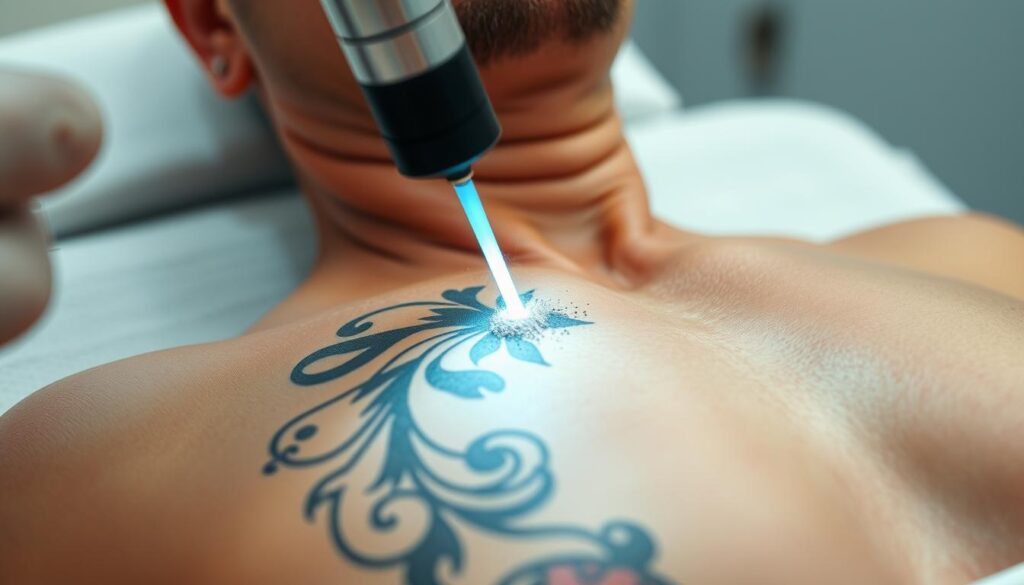
Modern body art updates require smart solutions, and today’s laser options deliver remarkable precision. Specialized devices break down pigments through focused light pulses rather than continuous beams. This approach protects your skin while targeting only the artwork you want revised.
Breaking Down Pigments with Precision
Medical-grade systems send quick bursts of energy into your skin. These pulses selectively attack color molecules without harming surrounding tissue. As the light interacts with pigments, it fractures them into tiny fragments your immune system can gradually remove.
Advanced Q-switch lasers revolutionized this process by using ultra-short pulses. “The shorter the pulse duration, the more effective the pigment breakdown,” explains Dr. Lisa Chen from the American Society for Dermatologic Surgery. This innovation allows technicians to address stubborn colors like greens and blues that older systems struggled with.
Next-Generation Light Pulse Systems
The Enlighten™ platform takes speed to new levels with picosecond technology. While traditional lasers operate in nanoseconds (billionths of a second), these devices work in trillionths:
- 40% faster pigment clearance compared to older models
- Reduced session counts for most designs
- Improved comfort during treatments
This cutting-edge approach means you’ll likely spend less time in the treatment chair. The system’s adjustable settings adapt to your skin tone and ink density, making it safer for diverse complexions than earlier laser generations.
Expert Tattoo Removal Procedures and Costs
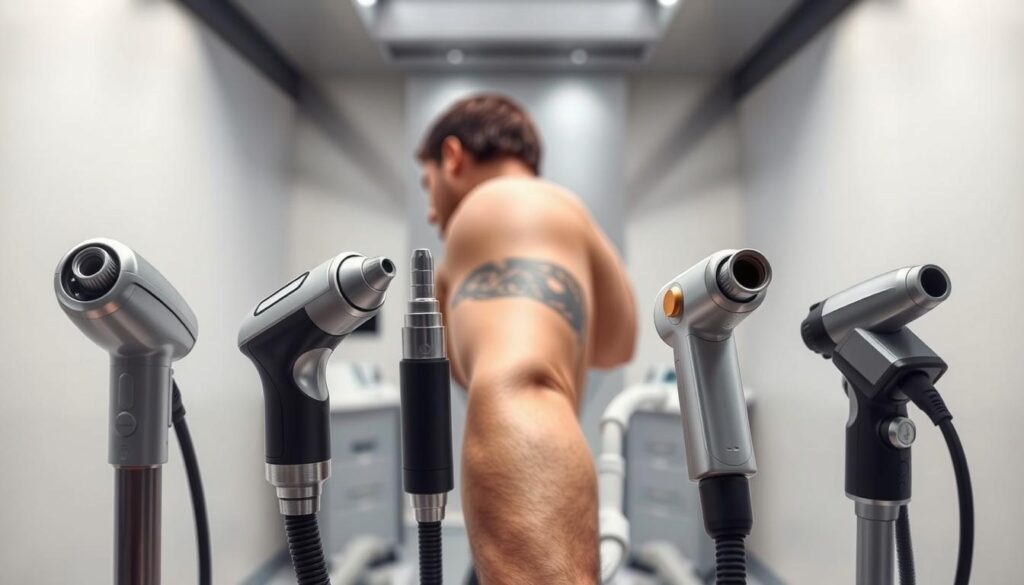
Exploring your options for revising body art? Modern solutions offer varied approaches, each with unique benefits and trade-offs. Let’s unpack five common methods to help you make an informed choice.
Comparing Modern Revision Methods
Laser treatments lead the pack for effectiveness and safety. Advanced systems break down pigments using targeted light pulses, minimizing skin damage. Most clinics recommend this approach for its balance of precision and low scarring risk.
Other methods have specific use cases:
- Dermabrasion: A surgical process using rotating tools to sand away skin layers. Requires anesthesia and suits small, shallow designs
- Chemical solutions: Acid-based peels remove surface ink but often cause irritation and uneven results
- Surgical excision: Cuts out the entire inked area, ideal for tiny symbols but leaves linear scars
- Topical creams: Over-the-counter options fade pigments slowly and may irritate sensitive skin
Costs vary widely. While laser sessions average $200-$500 each, you’ll likely need fewer appointments than with other approaches. Surgical options often have higher upfront prices but resolve designs in one visit. Dermatologists suggest weighing factors like design size, color complexity, and your skin’s healing capacity when choosing a path.
Laser Tattoo Removal: Procedure Step-by-Step
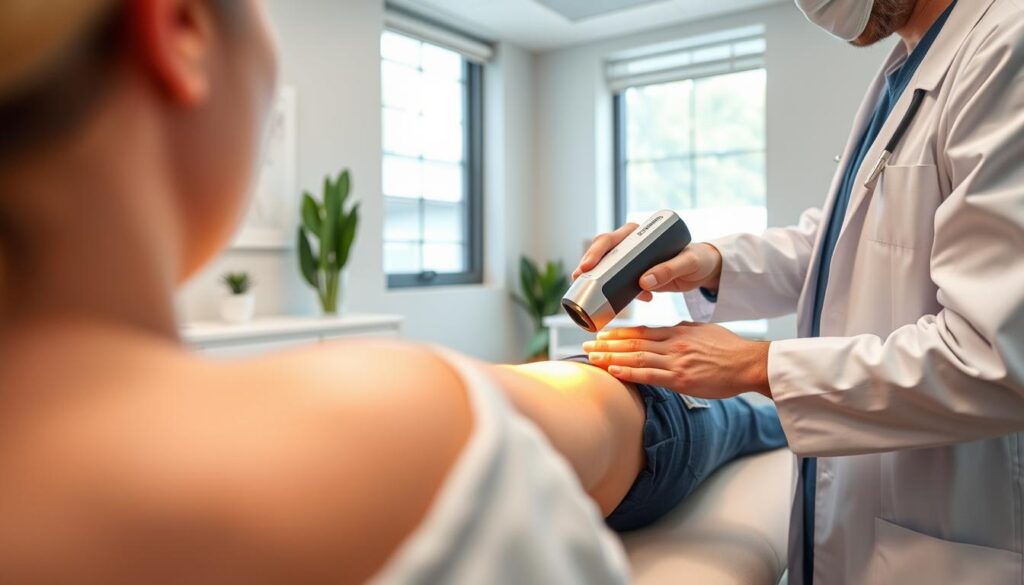
Taking control of your skin’s appearance starts with understanding the process. Modern techniques combine medical expertise with personalized care to help you achieve your goals safely. Let’s walk through what happens before and during your appointments.
Pre-Procedure Consultation and Skin Evaluation
Your journey begins with a detailed discussion. A certified specialist examines your design’s age, origin, and ink composition. They’ll ask about previous revision attempts and document your skin’s unique characteristics.
Expect precise measurements and progress photos during this visit. “We create baseline records to track changes effectively,” explains Dr. Emily Torres, a dermatology expert. This information helps customize your plan based on pigment depth and color complexity.
What to Expect During Treatment Sessions
Safety comes first when you arrive for your appointment. You’ll wear protective eyewear while the specialist tests small skin areas. This determines the ideal energy settings for your needs.
The process uses quick light pulses delivered through a handheld device. Smaller designs might need 30-50 zaps, while larger ones require more coverage. Most appointments wrap up in under 15 minutes.
Between sessions, your body naturally processes fragmented ink particles. The number of visits varies, but spacing them 6-8 weeks apart allows proper healing. Your specialist adjusts settings as needed throughout your journey.
Factors Influencing Treatment Sessions
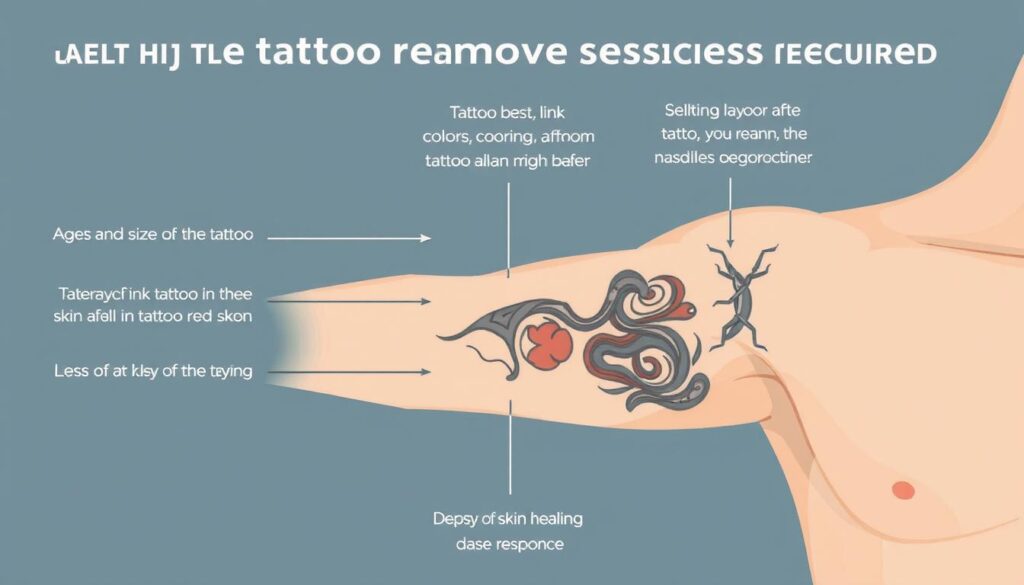
Your journey to clear skin depends on several key elements. Specialists evaluate these factors to create a realistic timeline and set proper expectations for your progress.
Design Dimensions and Pigment Profile
Three elements dictate how many appointments you’ll need:
- Surface area: Larger designs require more sessions – think 8-12 instead of 4-6 for smaller pieces
- Ink saturation: Bold outlines and dense shading take longer to break down than light washes
- Color spectrum: Blues and blacks fade fastest, while yellows and greens need specialized settings
Your Body’s Natural Rhythm
Healing speed varies between individuals. Monthly intervals allow your immune system to flush out fragmented pigments effectively. Those with robust circulation might see faster fading, while others need extended recovery periods.
Older designs often respond better than fresh ones. “Ink settles deeper over time, making it easier to target,” notes Dr. Rachel Kim from the National Laser Institute. Professional work typically clears more predictably than DIY designs due to consistent ink depth.
What to Expect During and After Your Laser Treatment
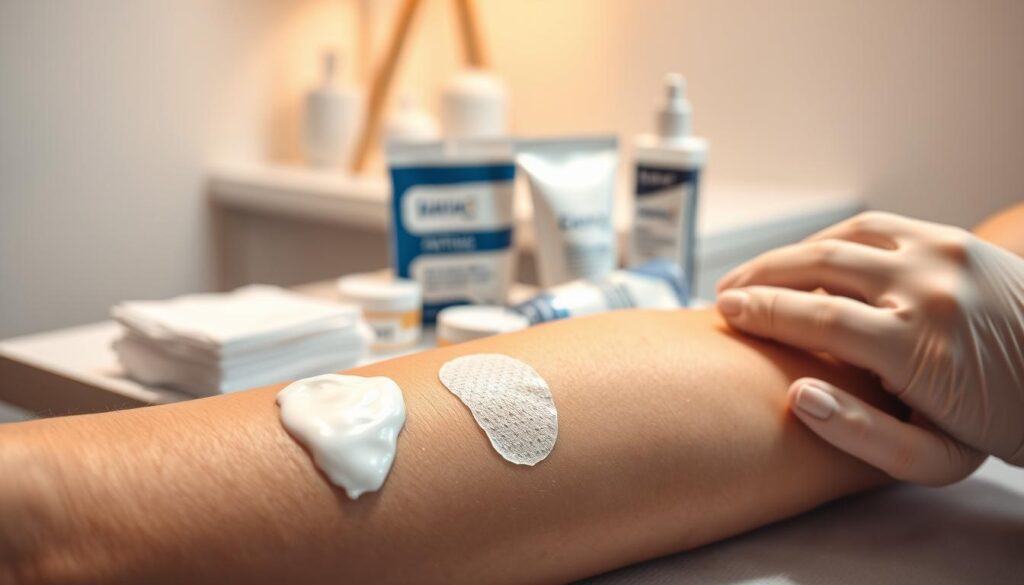
Understanding the process helps you prepare mentally and physically. Most sessions feel like quick snaps against your skin – think warm pinpricks that fade instantly. Specialists use cooling techniques to keep discomfort manageable throughout.
Immediate Post-Treatment Care Tips
Your skin needs gentle attention after each session. Redness and slight swelling are normal reactions that typically calm within hours. Follow these steps to support healing:
| Timeframe | Action | Purpose |
|---|---|---|
| First 15 minutes | Apply ice pack | Reduce swelling |
| Day 1-2 | Use antibiotic ointment | Prevent infection |
| Next 48 hours | Cover with bandage | Shield from bacteria |
| Week 1 | Avoid sun exposure | Prevent discoloration |
Shower normally after 24 hours, but skip harsh scrubs. Pat the area dry instead of rubbing. Sun protection becomes non-negotiable – use SPF 30+ whenever outdoors.
Resist the urge to scratch or pick at flaking skin. “Distraction techniques like fidget toys help many clients,” suggests nurse practitioner Maria Gomez. If blisters form, contact your provider immediately rather than popping them yourself.
Managing Pain and Potential Side Effects
Addressing discomfort effectively can make your journey smoother. Most describe the sensation as quick snaps against the skin – think warm rubber band flicks that fade fast. Sessions typically last 5-15 minutes, shorter than original ink application times.
Tailored Comfort Strategies
Providers offer multiple ways to ease your experience. Topical numbing creams applied 30 minutes beforehand reduce sensitivity significantly. “About 70% of patients choose this option,” shares dermatology nurse Amanda Reyes. For larger designs, cooling air devices minimize heat buildup during pulses.
| Method | Effectiveness | Best For |
|---|---|---|
| Numbing cream | Reduces surface sensitivity | Small/medium areas |
| Cooling gels | Calms skin post-treatment | All design sizes |
| Vibration devices | Distracts nerve signals | Bony areas (ankles, ribs) |
Post-session care matters as much as preparation. Mild redness resembles sunburn and usually fades within 48 hours. Over-the-counter ibuprofen helps manage tenderness – avoid aspirin to prevent excess bleeding risk.
Skin changes occur in 3 phases after treatment:
- Hour 1: Pinkish hue and slight puffiness
- Days 2-5: Temporary darkening as ink fragments rise
- Week 2: Flaking reveals lighter skin layers
Rare complications like scarring affect less than 5% of cases when following aftercare. Hyperpigmentation risks drop by 40% when using SPF 50+ consistently. Your specialist monitors progress to adjust techniques if needed.
The Science of Ink, Skin, and Tattoo Removal
Your skin tells a story, and sometimes that narrative needs editing. When light-based treatments target designs, they don’t erase history – they help rewrite it through precise biological processes.
Your Natural Defense Team at Work
Those vibrant colors in your skin exist as clustered pigments beneath the surface. Specialized light pulses fracture these into microscopic ink particles small enough for your immune system to manage. White blood cells called macrophages then transport these fragments to your lymphatic system.
Think of this as your body’s cleanup crew working overtime. Over weeks, macrophages gradually shuttle pigment particles away from treated areas. This explains why fading occurs progressively rather than instantly after sessions.
Factors like hydration levels and circulation speed influence this natural process. Staying active and drinking water helps your immune system clear pigment efficiently. Proper aftercare ensures your body can focus on this vital task without fighting irritation or infection.
